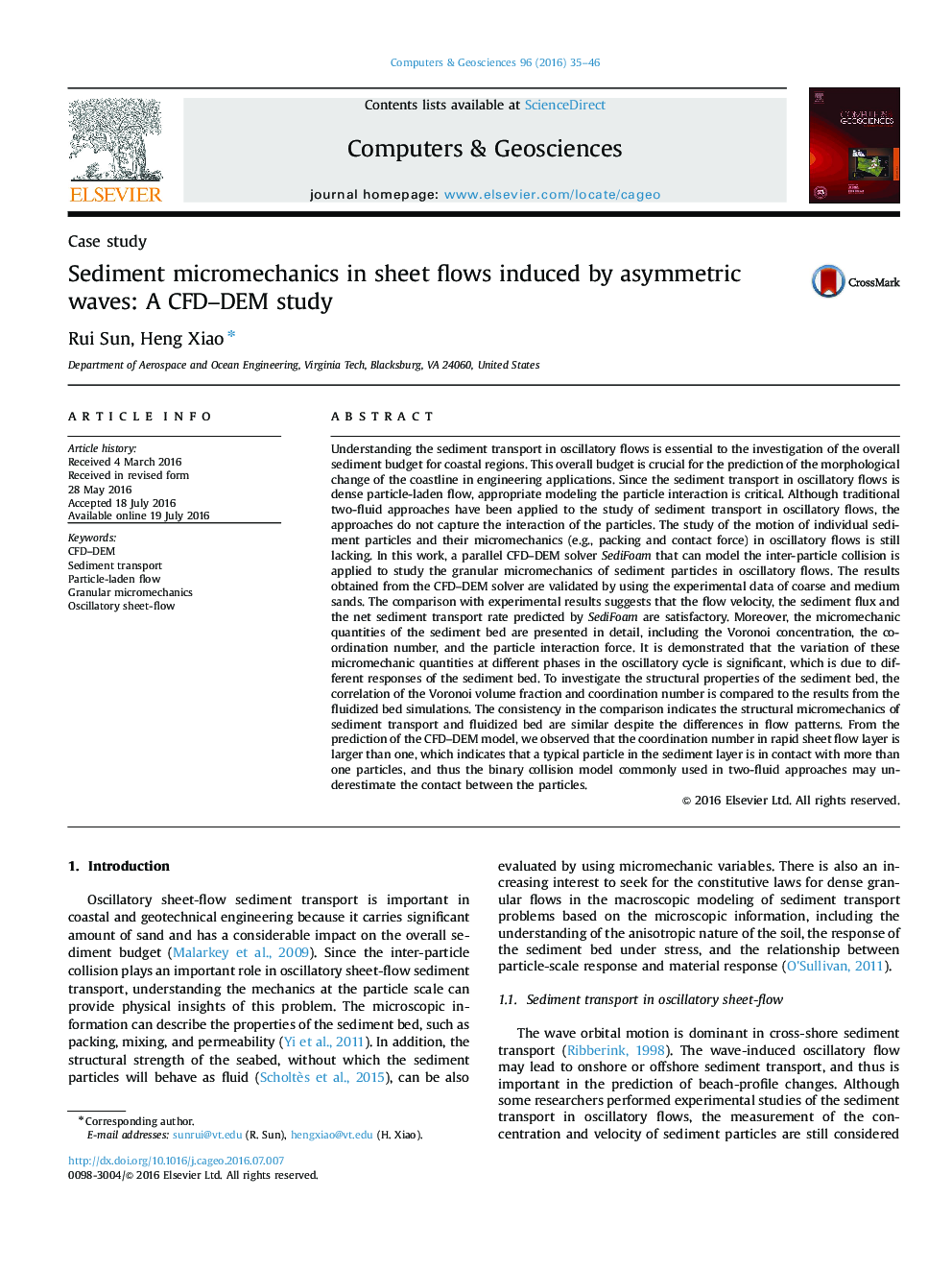| Article ID | Journal | Published Year | Pages | File Type |
|---|---|---|---|---|
| 506781 | Computers & Geosciences | 2016 | 12 Pages |
•Sediment transport in asymmetric wave is investigated using CFD–DEM.•Motions of individual coarse and medium particle in sheet flow are investigated.•The micromechanic quantities of sediment particles in moving bed are presented.•The gap in experimental measurement is bridged using results obtained by CFD–DEM.
Understanding the sediment transport in oscillatory flows is essential to the investigation of the overall sediment budget for coastal regions. This overall budget is crucial for the prediction of the morphological change of the coastline in engineering applications. Since the sediment transport in oscillatory flows is dense particle-laden flow, appropriate modeling the particle interaction is critical. Although traditional two-fluid approaches have been applied to the study of sediment transport in oscillatory flows, the approaches do not capture the interaction of the particles. The study of the motion of individual sediment particles and their micromechanics (e.g., packing and contact force) in oscillatory flows is still lacking. In this work, a parallel CFD–DEM solver SediFoam that can model the inter-particle collision is applied to study the granular micromechanics of sediment particles in oscillatory flows. The results obtained from the CFD–DEM solver are validated by using the experimental data of coarse and medium sands. The comparison with experimental results suggests that the flow velocity, the sediment flux and the net sediment transport rate predicted by SediFoam are satisfactory. Moreover, the micromechanic quantities of the sediment bed are presented in detail, including the Voronoi concentration, the coordination number, and the particle interaction force. It is demonstrated that the variation of these micromechanic quantities at different phases in the oscillatory cycle is significant, which is due to different responses of the sediment bed. To investigate the structural properties of the sediment bed, the correlation of the Voronoi volume fraction and coordination number is compared to the results from the fluidized bed simulations. The consistency in the comparison indicates the structural micromechanics of sediment transport and fluidized bed are similar despite the differences in flow patterns. From the prediction of the CFD–DEM model, we observed that the coordination number in rapid sheet flow layer is larger than one, which indicates that a typical particle in the sediment layer is in contact with more than one particles, and thus the binary collision model commonly used in two-fluid approaches may underestimate the contact between the particles.
